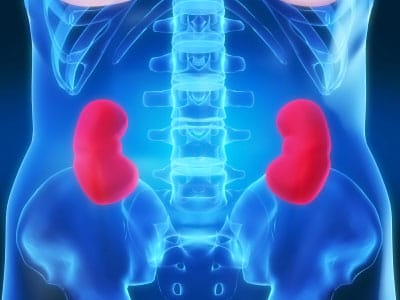01 december 2021 – 07:07
Some factors that influence the formation of kidney stones are known, but the precise chemical processes that take place in the kidney have not yet been deciphered. Researchers at TU Delft have developed a method to monitor the formation of kidney stones on a microscopic scale, in a so-called ‘kidney on a chip’. By slightly adjusting the pH and concentration of specific minerals, the formation of the kidney stones could be slowed down or even completely prevented. The research was recently published in the scientific journal Biomicrofluidics.

Kidneys on a chip
About 12 percent of people develop kidney stones and the condition is becoming more common worldwide. In a large proportion of patients it is even a recurring problem. Therefore, it is important to understand precisely the chemical processes behind the formation of kidney stones. “The kidney is still kind of a black box to us,” said researcher Burak Eral, “we can measure what goes in and what comes out, but it’s hard to really see what’s happening inside.” The researchers therefore developed a microfluidic platform, a so-called ‘kidney on a chip’, to be able to view kidney stone formation on a microscopic scale.
The kidney on a chip actually consists of a narrow channel with two entrances: one with a fluid similar to the fluid in our kidneys, and one with oil. After a drop of renal fluid is pumped into the canal, a drop of oil is added. In this way, the renal fluid droplets are separated from each other, creating microscopic renal environments. The tube and the droplets are so small that even the smallest crystal formation of a kidney stone can be observed with a microscope.
Artificial urine
By adjusting the composition of the kidney fluid, the researchers were able to determine exactly which factors influence the formation of kidney stones. Changes in the pH value and in the concentration of magnesium ensured that the formation was slowed down, or even completely prevented. Researcher Fatma Ibis: “It is the first time that this kind of experiment has been done on such a small scale, making it possible to observe the first signs of crystal formation. On a larger scale, it is only possible to view the growth of already formed kidney stones. So now we can really see the direct effects of changes in renal fluid.”
The researchers used only the most essential ingredients to mimic kidney fluid, in reality kidney fluid is much more complex. Eral: “It is the beginning of a long journey. The next step would be to use, for example, artificial urine in our kidney on a chip and make the system more complex.” Ultimately, the researchers believe it will be possible to use the mechanism with patients’ urine to determine a specific treatment for their condition. Ibis: “Many factors play a role in the formation of kidney stones, and these factors differ per patient. Personalized treatment could be a very efficient way to help patients with kidney stones.”
More information
Ibis, F., Yu, T. W., Penha, F. M., Ganguly, D., Nuhu, M. A., van der Heijden, A. E. D. M., Kramer, H. J. M., & Eral, H. B. (2021). Nucleation kinetics of calcium oxalate monohydrate as a function of pH, magnesium, and osteopontin concentration quantified with droplet microfluidics. In Biomicrofluidics (Vol. 15, Issue 6, p. 064103). AIP Publishing. https://doi.org/10.1063/5.0063714
Source: TU Delft


